Pesticides: These are agricultural chemicals for plant protection
The cultivation of any crop is not complete without the use of chemicals. They help to get rid of pests and plant diseases, weeds and other ailments. It is known that a large number of different kinds of pesticides are used in agriculture, with the help of which it is possible to preserve the yield.
However, for many, the term "pesticide" is associated with something poisonous, a substance that should not be used in horticultural affairs. Gardeners believe that they use harmless drugsbut they are also pesticides. Few people understand what, in fact, a pesticide is and whether it is needed in the beds. Therefore, it is very important to understand what this substance is and what service it will serve the gardener, how to select and use it. This review will tell you about the types of pesticides, their forms of release and the correct application in the garden.
Content
- Pesticides: a description of the chemical
- Pesticide classification
- Form of release of chemicals
- Pesticide use
- Precautions for use
- Pros and cons of using pesticides
Pesticides: a description of the chemical
The fact that crops give a bountiful harvest, subject to special processing, guessed back in the 9th century BC. Mankind fumigated plants with sulfur, which increased productivity at times. The smoke of this substance scared away insects and aphids. We can safely say that it was at this time that the history of the modern pesticide began. Over time, it improved and in 1939 the first, full-fledged chemical product appeared.
True, it was more likely intended for etching malaria mosquitoes, but the essence remains the same - it was the first pesticide. It was invented by P.G. Müller, for his development he received the Nobel Prize at one time. This drug has saved many lives, but, unfortunately, decades later, it took the lives of animals and ruined a lot of vegetation. The pesticide was called DDT and is now banned in all developed countries. Since the time of Müller, the chemical industry has developed and began to produce less aggressive products that do not cause serious harm to human health and other warm-blooded animals.
A pesticide is a chemical used to destroy or suppress pests plants, parasites, diseases, fungi, weeds and infections.
Thanks to this tool, humanity has the opportunity to collect a bountiful harvest and store it for a long time. According to some reports, if the use of pesticides is stopped, yields around the world will decrease by 50%, which, of course, no state can allow. Thus, the use of chemicals in horticulture and agriculture is generally considered normal. Competent and reasonable use of drugs will allow you to grow a good harvest.The main thing is to use the pesticide for its intended purpose and in small quantities, it is better less often than more often.
Pesticide classification
There are many classifications and tables of pesticides. They are based on the composition of the preparations, the purpose, the method of exposure and the degree of danger.
For the convenience of gardeners and the correct choice of the right product, pesticides are grouped into the following categories:
- Herbicides - this group of drugs is intended for destruction weeds... It is mainly used in agriculture when processing fields.
- Insecticides are the largest group of pesticides and are intended to destroy pests... It is to these drugs that they resort to on a personal plot when growing vegetables.
- Fungicides - a group of chemicals designed to destroy fungi that infect plants. Fungicides treat cultures from various diseases.
- Zoocides - this group of pesticides is intended for the destruction of warm-blooded animals, such as rodents. It is more often used in barns and fields in agriculture.
- Molluscicides - this group of agents is used, as a rule, to kill slugs.
- Nematocides - based on the name, it becomes obvious that the drug is intended for the destruction of nematodes (roundworms).
Regulators that promote the development and growth of plants (they are included in all complex fertilizers). Seeds for sale are also treated with pesticides.
For the gardener, insecticides and fungicides are of more interest, since these drugs help get rid of pests and plant diseases. When purchasing pesticides, you need to know another, no less important classification according to the degree of hazard. There are several classes:
- The first class includes potent drugs. This class is prohibited for use in the conditions of the infield.
- The second class is highly toxic drugs. Its use is permitted on personal plots.
- The third class - drugs of average toxicity, are allowed on personal plots.
- The fourth class is a group of low toxicity agents. It is this class that is recommended for use in gardens and vegetable gardens.
In addition to classifications by purpose and degree of hazard, there are other categories of pesticides. According to the principle of influence on the plant and the vital activity of pests, they are distinguished:
- Contact group of pesticides. The parasite dies on contact with a chemical.
- The systemic group of agents penetrates the vascular system of the plant. The pest dies when eaten.
- The so-called intestinal group of pesticides affects the digestive system pests... Once inside the parasite, the pesticide destroys it.
- The fumigative group of pesticides acts on the parasite through its respiratory system.
All pesticides are divided into two general groups: organic and inorganic. These groups are based on chemical composition. Also, chemicals are divided into categories of preventive, curative and destructive nature. That is, the gardener should understand initially what he is going to do - take preventive measures or destroy insects.
It should be remembered about one important point when processing a garden or vegetable garden - change the class of the chemical every year, otherwise the pest will quickly adapt to the poison, and the opposite effect will turn out.
The classification of the chemical classes of pesticides will tell the gardener little, knowledge of chemistry and various compounds is, by and large, useless. The main thing is the knowledge of the group of purpose, the degree of danger and the method of exposure. Chemical classes are subdivided into 20 groups. For example:
- Sulfur compounds
- Metal
- Rodanic and cyanic
- Fluorinated
- Organophosphorus
- Synthetic pyrethroids
- Urea compounds
- Hydrocarbons
- Ketonic acids
- Uracil
- Aldehydes
- Sulfonic acids
Often the main compound is indicated on the packaging of the drug. For example, nitrogen or phosphorus-potassium. Given this compound, the grower already knows how the remedy will work. In addition to generally accepted classifications, it is advisable to know those drugs that are prohibited for use in the territory of the Russian Federation. These include: "Vertimekt", "Tilt", "Diazinon", "Mavrik", "Saprol", "Demitan", "Fosbicid", "Acrobat MC", "Fundazol", "BI-58", "Ground" , "Pegasus", "Arrow", "Vertax", "Forte", "DD".
Pay attention to the preparation "BI-58". Now it is produced with a different formula and is being certified. That is, a new drug of the third class may have already appeared on the market. Funds with organochlorine compounds pose a particular threat. They can be compared to potassium cyanide in terms of hazard. Their use is prohibited. The use of pesticides is highly undesirable. They are resorted to only when there is no other way out. The main emphasis is on other methods of pest and disease control - agrotechnical, biological and mechanical.
Form of release of chemicals
Pesticides come in many different forms. It depends on the purpose and the degree of danger of the drug. The most common and convenient ones are:
- Dusts or powders - used to pollinate plants in calm weather.
- Granules are used to add chemical compounds to the soil.
- Fumigants and aerosols - used to fumigate plants.
- Aqueous solutions are used for spraying.
- Emulsions. They are diluted in water, then the plants are sprayed with the resulting solution.
- Pencils, soap, paper, various baits are used to kill insects and rodents.
- The tablets dissolve in water. The solution is sprayed using a special device.
The most convenient and common form is dust and concentrate or emulsion. These forms are often used by gardeners. It is recommended to store any preparation in the dark, in a separate room.
Pesticide use
Modern technologies make it possible to invent multipurpose chemical preparations. For example, the well-known "Iskra" contains several classes of chemical compounds. Dissolving the tablet, a homogeneous mass is obtained. Then, using a spray bottle, the solution is distributed to the plants. This composition of the drug allows you to effectively deal with pests, parasites do not adapt to chemical compounds due to their diversity.
Experienced gardeners recommend using liquid emulsions and concentrates.
They are dissolved in water according to the instructions and sprayed on the plants. Powders, for example, are not very convenient. The fact is that about 50% of the product is carried by the wind and ends up on other, not cultivated, crops. This happens even in seemingly calm weather. Therefore, gardeners prefer aqueous solutions. Another useful recommendation is to use a smaller volume of the drug than indicated on the package. For example, if the ratio of 2 grams of product to 10 liters of water is indicated, dilute 1 gram instead of the indicated 2. The drug will still work, but the plant will suffer less from chemical compounds and will not receive a possible burn.
When it comes to dusts, the best time to pollinate or fumigate is on a quiet morning or evening. It is advisable to cover the non-treated areas with material in order to avoid getting the drug on them. Try to carry out the processing procedure in warm weather, the air temperature should be approximately 20 ° -22 °.
Chemical preparations are more often used before the growing season and after for prophylactic purposes, during the period of growth and flowering in order to destroy emerging diseases and pests. In the spring, growth regulators are introduced into the soil, this procedure is necessary only in the case of poor, barren land. For feeding plants often use complex preparations with nitrogen or phosphorus-potassium compounds.Always follow the instructions for mixing and using the chemical. drug.
Precautions for use
When treating the site with pesticides, all precautions must be followed:
- Be sure to wear gloves, a mask, and special clothing.
- Protect your eyes with clear glasses or special masks.
- Hide your hair under a hat.
- At the end of the work, remove the protective ammunition outside and shake it out.
- Then you should take a shower.
Treatment should be carried out in calm weather, air temperature 20 ° -22 °. If you have pets, make sure they are not nearby. If the drug gets on the skin or mucous membranes, rinse them with water and, in case of poor condition, consult a doctor.
Store chemicals in a separate room; children should be prohibited from accessing them. It is advisable to have a small box with a lock and store pesticides in it. For storage requires room temperature and no light. Always check the expiration date of the funds.
Pros and cons of using pesticides
Any use of chemicals is fraught with consequences. For example, Muller, having discovered the first pesticide, did not suspect that after a few decades his "rescuer from malaria" would become a punishment for flora and fauna. Today, a large number of pesticides are being developed, nothing is known about their impact on the environment and humans. Unfortunately, humanity learns about these consequences too late, when nothing can be done or taken.
However, there are already proven and verified facts about the harmful effects of pesticides on flora, animals and humans.
Pesticides are used not only for processing plants, but also for extending the shelf life of grain, vegetables, fruits, nuts and many other food items. According to recent studies, scientists have come to the conclusion that the rapid surge in cancer is associated precisely with the ingress of pesticides into the human body. The boom in cancer falls on a period of large-scale introduction and use of chemicals. It took decades to identify the cause of human diseases and the extinction of rare plant species.
Along with the negative effects of pesticides, there are also pluses. Their use allows you to collect bountiful harvests and grow unearthly beauty gardens and greenhouses. If you reduce or stop using pesticides, the amount of food you eat will decrease dramatically, which can lead to hunger. In this regard, gardeners have to decide for themselves whether to use pesticides or not.
Knowing about the most commonly used chemicals, the gardener can easily navigate the wide range of pesticides. They will help preserve the harvest and grow ornamental plants without interfering with diseases and pests... In addition to pesticides, use agronomic, biological and mechanical methods to control weeds, pests and diseases.
More information can be found in the video.




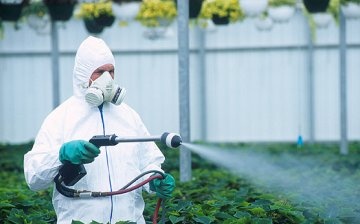
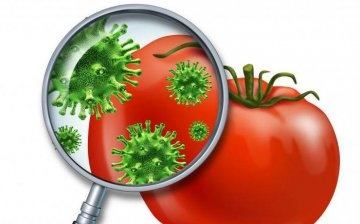
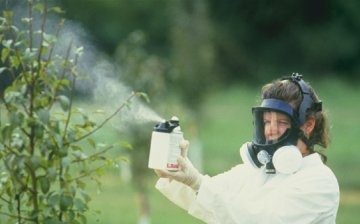

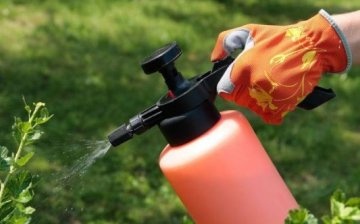

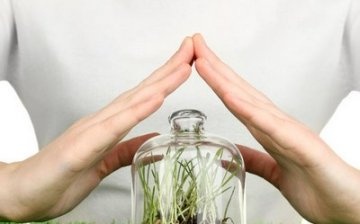








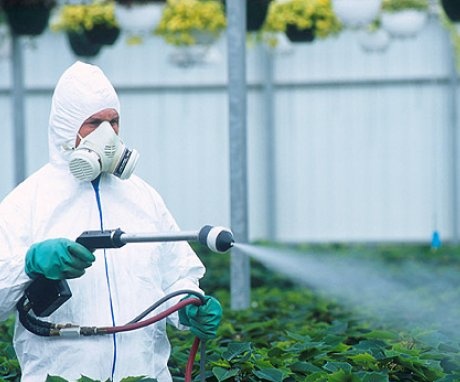
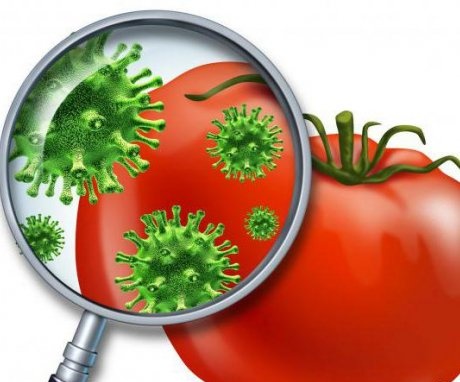

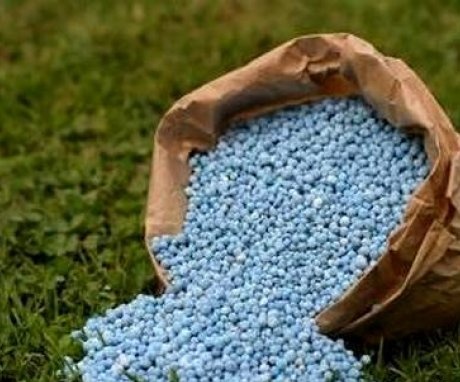
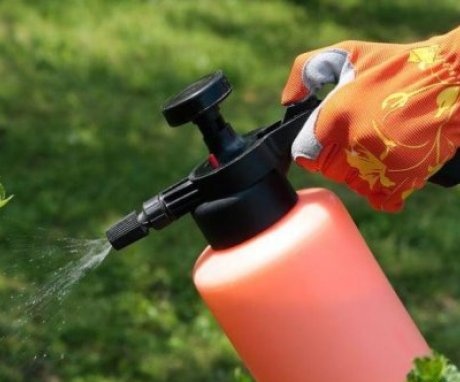
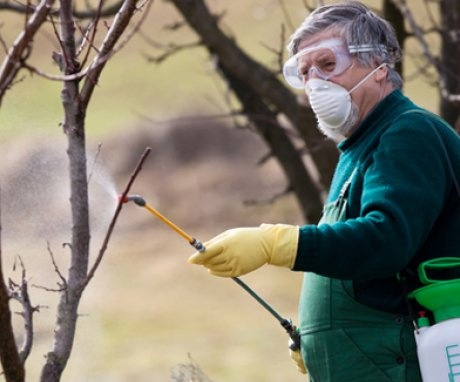

We do not use pesticides at our summer cottage. Our plot is not large and is quite capable of weeding. Although on an industrial scale on collective farm fields, one cannot do without herbicides.